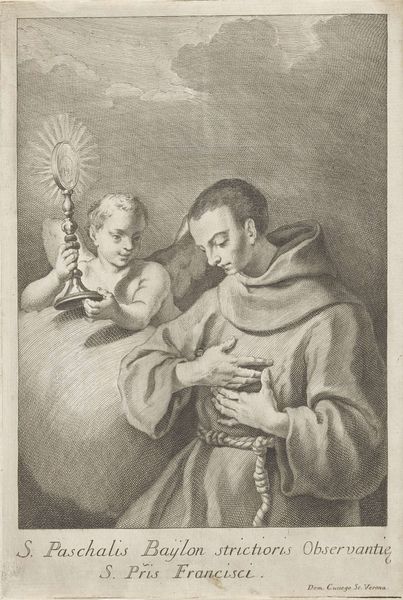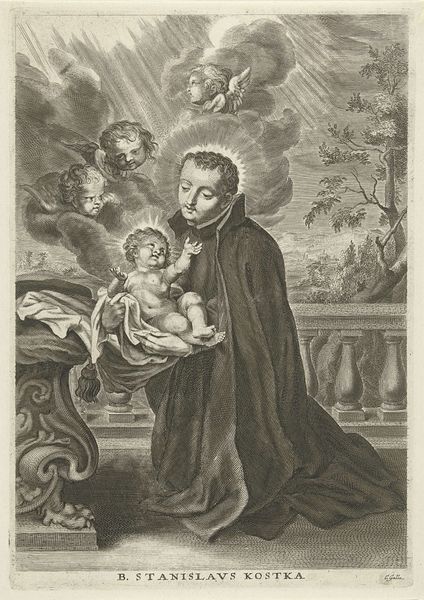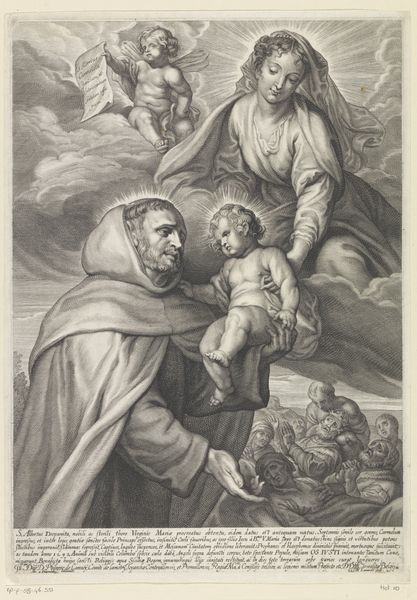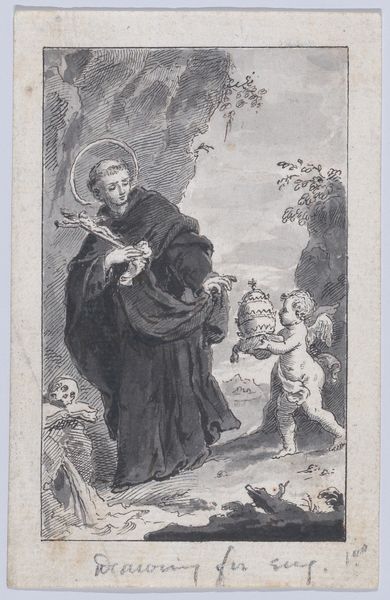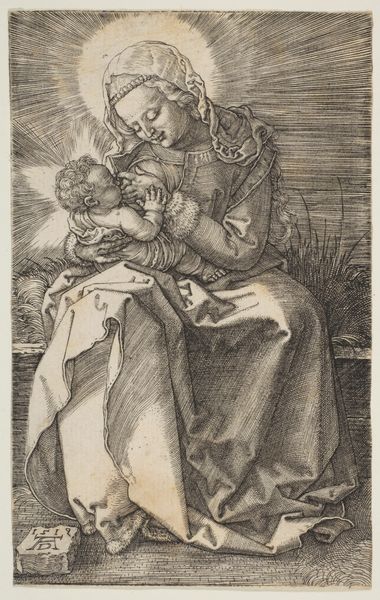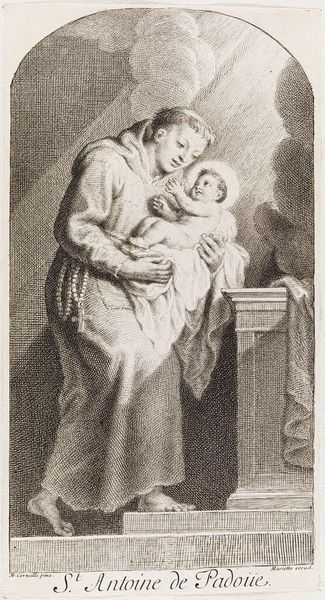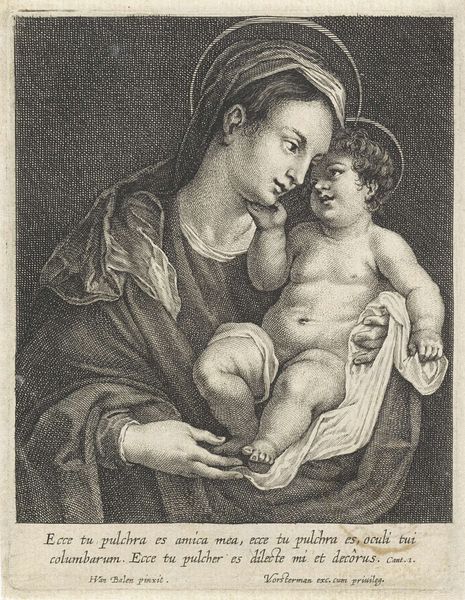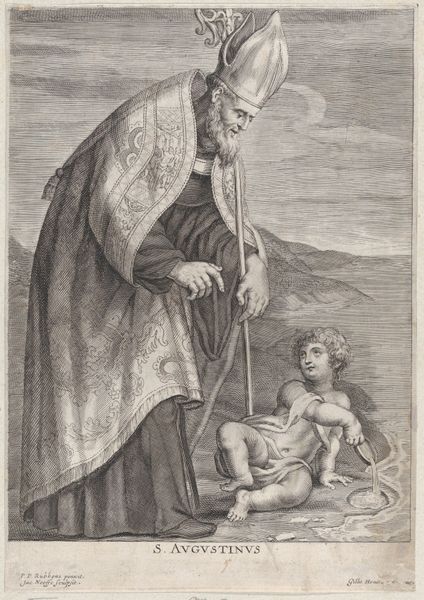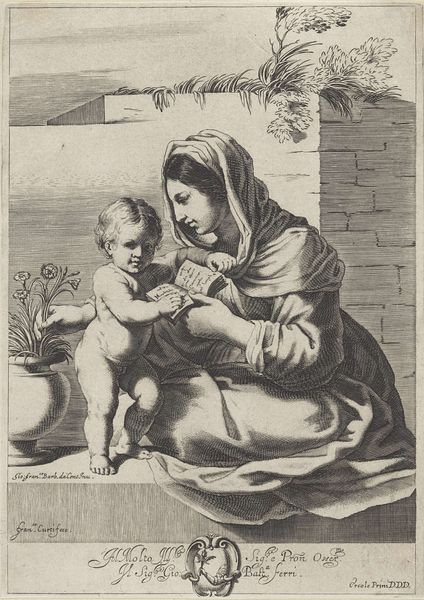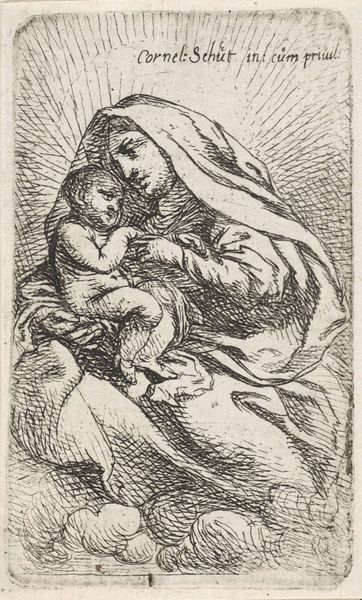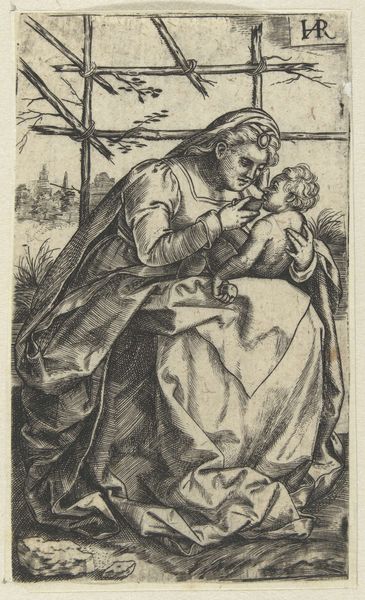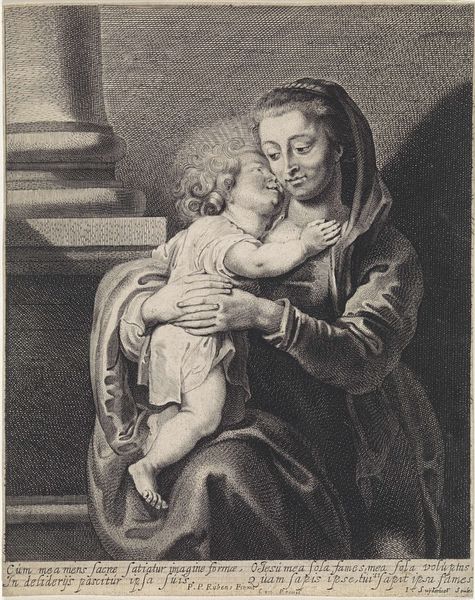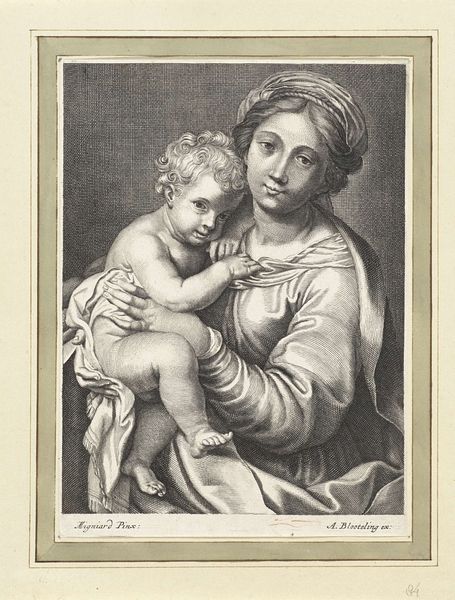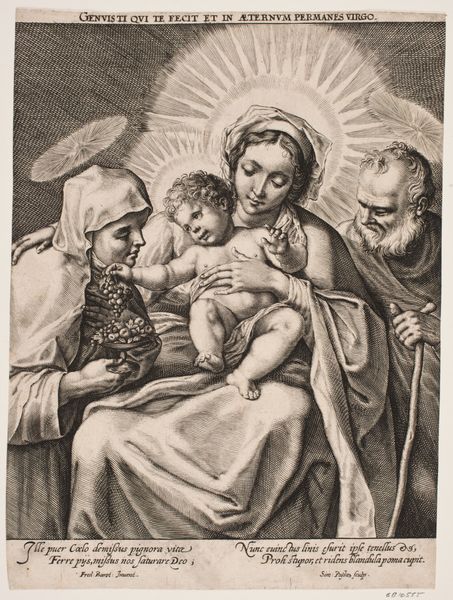
engraving
#
portrait
#
baroque
#
book
#
figuration
#
line
#
history-painting
#
engraving
Dimensions: height 221 mm, width 131 mm
Copyright: Rijks Museum: Open Domain
Curator: This is "H. Antonius van Padua," or Saint Anthony of Padua, an engraving dating from sometime between 1628 and 1689, attributed to Alexander Voet the First. The image is striking—the dark lines against the lighter background… almost somber. Editor: There's a lot happening in this small engraving. The composition immediately directs my attention to the interplay of textures: the rough texture implied in the monk's robe contrasted by the smooth quality of the infant's skin. It is interesting how texture can still play such an active role, especially since it's "just" line art. Curator: Indeed. Consider how the lines deepen the symbolism. Anthony of Padua, as we see him here, is perpetually linked to childhood, hope, and new beginnings, and note how the artist uses these dark lines to convey the saint's gravitas, which comes across beautifully here. This speaks to how deeply entrenched certain archetypes become within a culture’s collective consciousness. Editor: The printing process here, using an engraved plate to reproduce the design onto paper, raises questions of labor. These prints made images more accessible, weren't they? They're small but potent objects in how the process makes meaning. Also the lilies are intriguing. How are they adding or changing the symbolic language of the time? Curator: Lilies have signified purity and divine love since antiquity. Their inclusion links Saint Anthony further with not just the divine but with innocence. This layering of symbols makes the image resonate on many different levels—it's an emotional and spiritual prompt, deeply rooted in the visual language of the time, yet, through those sharp, decisive lines, immediately appealing to the present. Editor: This reminds us how images become social objects, both precious in their own right but more importantly representative of much wider socio-economic conditions that ultimately led to this work coming into being. What began with ink and a plate ultimately reflects broader questions about its moment, our moment, and ways of making meaning through reproducible means.
Comments
No comments
Be the first to comment and join the conversation on the ultimate creative platform.
